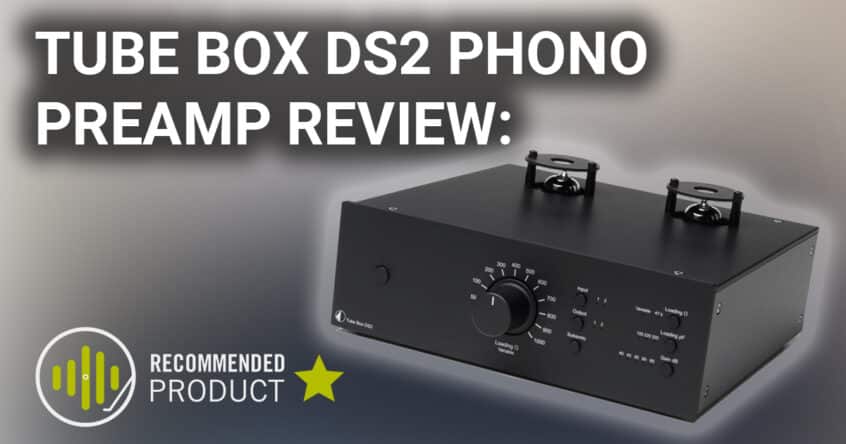The Tube Box DS2 promises audiophile phono stage credentials with added tube “warmth” and versatility to suit a wide range of cartridges. Does it deliver the musicality and character vacuum tubes are known for?
Sound Matters compare the performance of a built-in phono preamp to the Tube Box DS2 as a component upgrade.
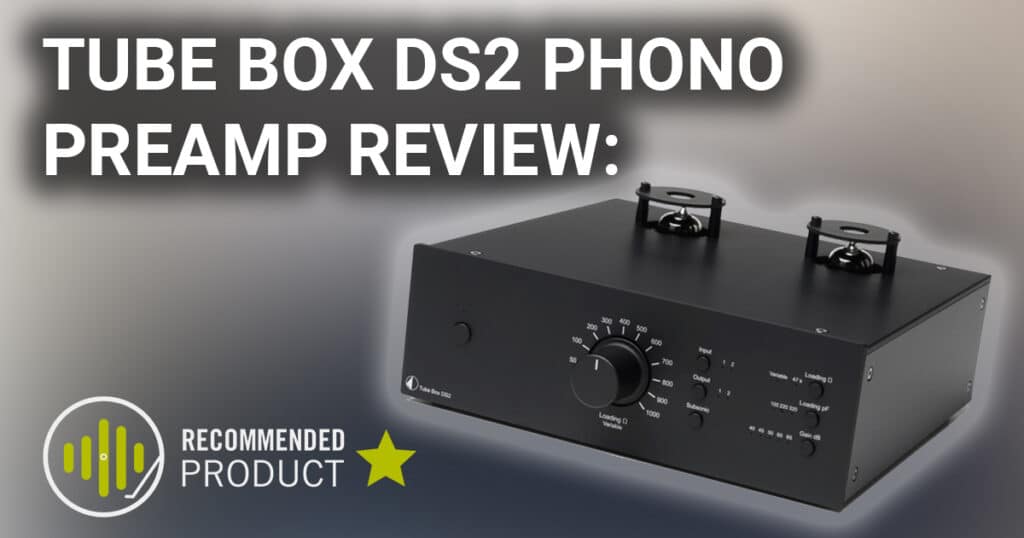
Impressive Versatility
Sound quality aside, the Tube Box DS2 is an extremely versatile phono preamp in its price bracket.
It features a dual-mono design for superior channel separation. It also boasts two discrete inputs and outputs, giving you the option to connect two separate turntables to feed two separate amplifiers if you so wish.
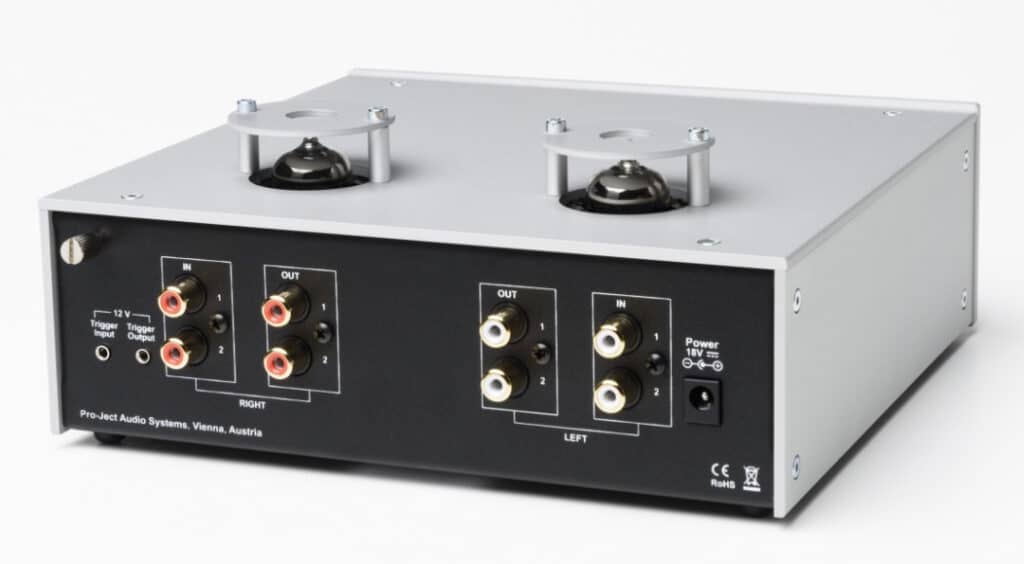
Alternatively, you could use the second output to feed a USB audio interface for convenient record archiving on your computer.
Compatible with both MM (moving magnet) and moving coil (MC) cartridges, the Tube Box DS2 is fully customizable for Gain, Capacitance, and impedance settings.
Unlike many phono preamps with adjustable settings, these controls are all easily adjusted from the front panel rather than via small dip switches on the rear, under, or inside of the chassis. This convenience is priceless for vinyl enthusiasts hooking up two turntables, or running multiple cartridges, as it makes for an easy and seamless switch from one input source to another.
Also worth pointing out on the front panel is the “subsonic filter”, which, when engaged, filters out any unwanted ultra-low rumble below 20Hz.
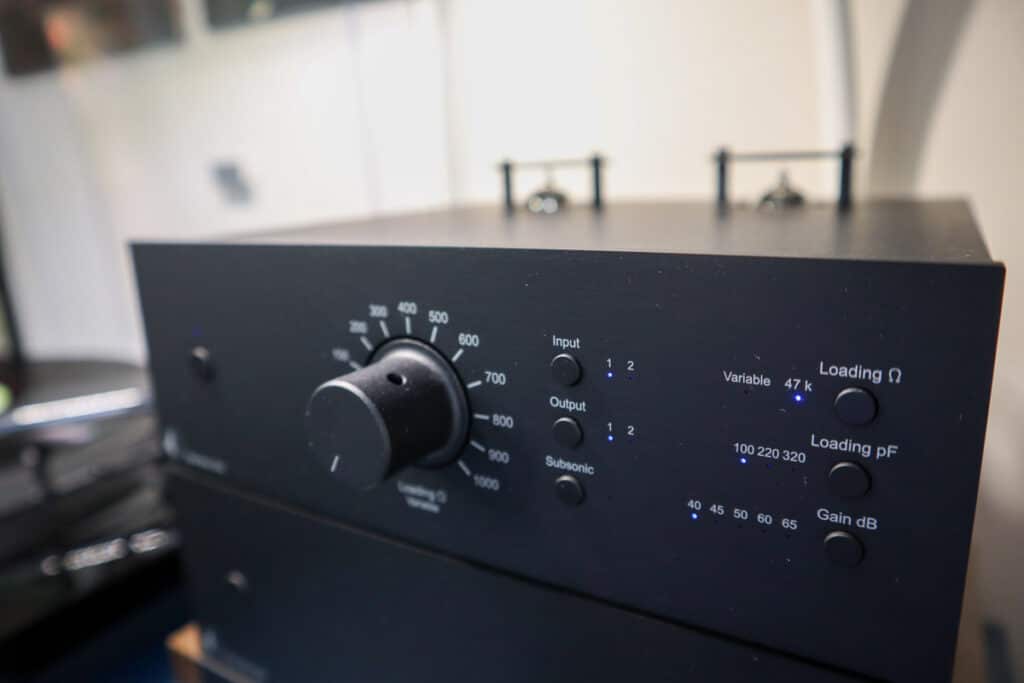
How to Adjust the Input Settings
When adjusting the preamp settings for your cartridge, it’s best to refer to the manual of your specific phono cartridge. In my case, running an Ortofon 2M Blue, the optimal settings are as follows:
The impedance at 47kOhm (The rotary dial should be set to 10Ω)
Loading capacitance set to 100pF (With the impedance fixed at 47, this makes for a total capacitance of 147pF).
Gain: 40dB
For MM and high output MC cartridges, the impedance setting should be fixed at 47k, however the capacitance you can adjust to taste.
The beauty of an adjustable phono preamp like this, however, is the ability to experiment. The settings given by any manufacturer are essentially guidelines, and may be affected by other elements in your signal chain (including the capacitance of your tonearm cable).
For low-output MC cartridges, the capacitance controls are not relevant and you should adjust using the variable rotary dial. Gain settings are typically 60dB+ in this case, depending on what level retains distortion-free playback.
Welcome to the world of HiFi, where almost all aspects of your signal chain have some degree of impact—great or small—on the final sound quality.
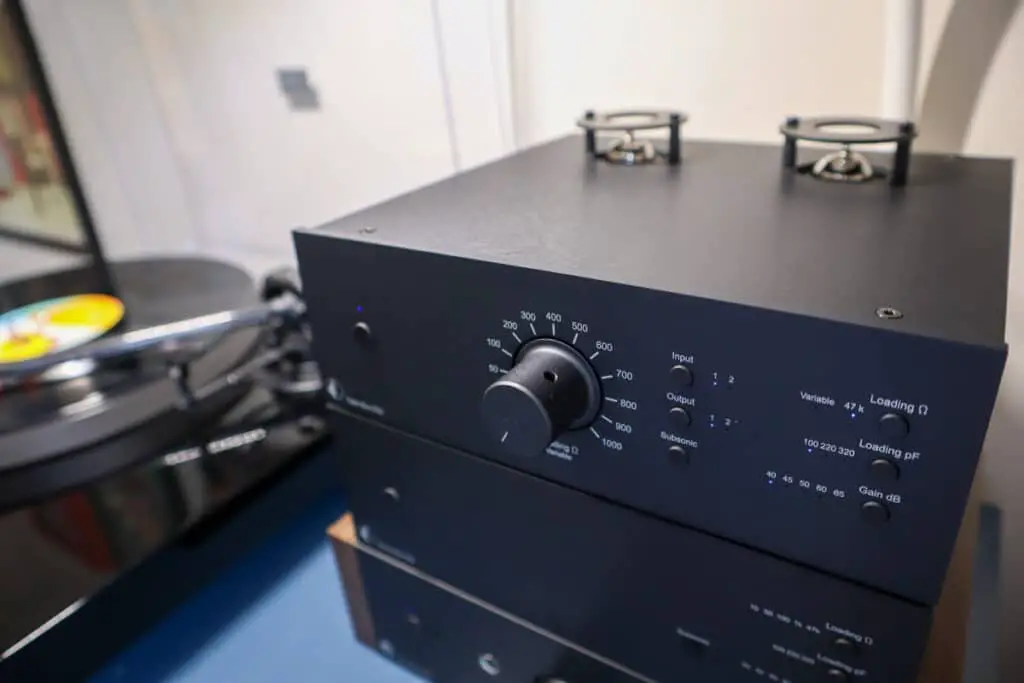
Tube Phono Preamp Credentials
Like many tube phono preamps, the Pro-Ject Tube Box DS2 is actually a hybrid solid state/tube design.
The two 12AX7 (ECC83) vacuum tubes are located in the output stage as a buffer adding tube character to the signal.
Pro-Ject Tube Box DS2 Review Does it Sound Better than a Built-in Phono Stage?
For the purpose of this review, I wanted to see if the Tube Box DS2 would improve the performance from the built-in phono stage of my Pro-Ject Stereo Box DS2 (part of the same HiFi eco-system, of course).
Firstly, I should state that I’ve always considered the built-in phono preamp on the Stereo Box to be impressive for an “out of the box” solution. And on my listening tests comparing it with the Tube Box, the standard built-in phono stage actually held its own really well.
That said, separate components almost always raise the bar. It stands to good reason that a single box designed to perform one task, and one task only (if designed properly) should out-perform a box that covers pre-amplification and amplification.
The Tube Box is certainly no exception. Immediately, the channel separation is improved, and the soundstage is increased. There’s a subtle increase in width and depth that makes records sound more “realistic” or “alive”.
Typical tube “warmth” doesn’t really cut it to describe how this phono preamp sounds, and I always find that term quite generic.
To my ears, the tube circuit adds extra dynamics in the lower mid-range particularly. This made the Tube Box DS2 a more engaging listen.
Overall, this phono preamp has a rich and organic sound that will appeal to vinyl fans who enjoy a little “color” in their audio signal. Undoubtedly there is a significant increase in performance compared with any built-in phono stage I’ve heard.
Tube Box DS2 Review – The Bottom Line
For those seeking tube character in a phono stage, the Tube Box DS2 isn’t the cheapest option on the market, nor is it the most expensive. It does, however, represent a sweet spot between audio character and versatility.
Added to my setup, it significantly improves my vinyl experience and adds future flexibility to work with a huge variety of different phono cartridges.
Bring into the equation the option of a second turntable with convenient switching, and at this price point, the Tube Box DS2 simply can’t be beaten.
As a system expansion, this is perfect for adding a dedicated—ready-to-go—mono cartridge equipt deck, for example.
As the ultimate compliment in any review, I will be buying this preamp. Having compared the Tube Box DS2 to another Pro-Ject external Phono Stage (the Phono Box DS2) I’ve settled on the tube option as I found the overall listening experience more dynamic and musical.
That said, if a more transparent sound is more suited to your taste, I highly recommend seeking out the Phono Box DS2 as a solid-state alternative. At just $399/£329 – it’s also a real bargain in comparison.
Tube Box DS2 Price: $999/£699






